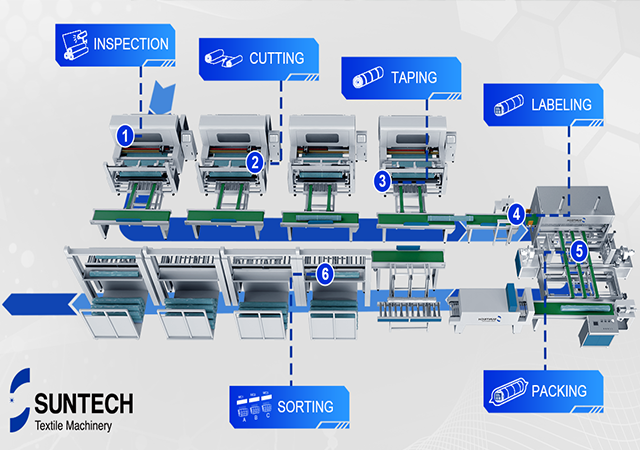The fabric make-up machines industry is characterized by intense competition, with numerous manufacturers striving for market dominance. Companies within this sector are consistently innovating, introducing novel products and technologies to maintain a competitive edge.
Global Dynamics of the Fabric Make-up Machines Industry
The global fabric make-up machines industry is marked by high competition and fragmentation, primarily due to the presence of numerous small and medium-sized manufacturers. Key players shaping the market landscape include Juki Corporation, Brother Industries Ltd., Singer Corporation, Pfaff Industrial Sewing Machine Company, Durkopp Adler AG, and Yanase Co., Ltd. These industry leaders have established robust footholds in developed countries like Japan, Germany, China, and the U.S.
Current Industry Trends and Developments
The fabric make-up machines industry is in a constant state of evolution, witnessing the regular introduction of new technologies and developments. Staying abreast of the latest industry trends is crucial for companies aiming to stay ahead of the competition.
A noteworthy trend in the fabric make-up machines industry is the emergence of multi-purpose machines. These versatile machines are designed to execute various functions, such as cutting, joining, and sewing fabric pieces together. This presents a significant advantage for businesses, reducing the necessity for multiple machinery units and saving both space and costs.
Another prevalent trend involves the increased adoption of computerized systems. These systems enable businesses to automate key tasks in fabric make-up, such as pattern recognition and cloth cutting. This automation not only saves time but also mitigates the risk of human errors.
In addition to these major trends, several smaller trends are shaping the fabric make-up machines industry. These include advancements in thread tensioning systems, automatic fabric feeding mechanisms, and enhanced safety features. Collectively, these trends contribute to making fabric make-up machines more efficient and effective than ever.
Innovative Solution: SUNTECH automatic packaging machine
SUNTECH Textile Machinery introduces an automatic packaging machine that revolutionizes the packing process through full automation. This machine achieves vacuum and automatic packing, reducing the need for manual labor with functions such as 3360 rolls per shift, vacuum packing, labeling, smart sorting, and ERP connectivity.

Market Size and Growth Projections
The global fabric make-up machines market is poised to reach USD 3.48 billion by 2024, projecting a Compound Annual Growth Rate (CAGR) of 4.6% over the forecast period, according to a report by Grand View Research, Inc. The increasing demand for these machines from the textile industry is a key driver for market growth.
Asia Pacific is positioned as a dominant force in the market, contributing significantly to its value. Factors such as a burgeoning population and improving economic conditions drive demand for textiles in end-use industries like apparel and home furnishings. Additionally, the growing demand for technical textiles across various industries fuels market growth in the Asia Pacific region.
Segmentation and Growth Prospects
The global fabric make-up machines market is segmented based on type, application, and geography. Types include weaving preparatory machines, spinning preparatory machines, knitting machines, sewing machines, and others. Knitting machines are expected to experience substantial growth due to their ability to produce a diverse range of textiles with different patterns and textures.
Applications span textile mills and factories, the apparel industry, the technical textile industry, and household use. Geographically, North America is a significant segment in the fabric make-up machines market.
Forecasts indicate a CAGR of 5.8% for the global fabric make-up machines market from 2018 to 2023, according to a report by MarketsandMarkets, with the Asia-Pacific region anticipated to be the largest market during this period.




